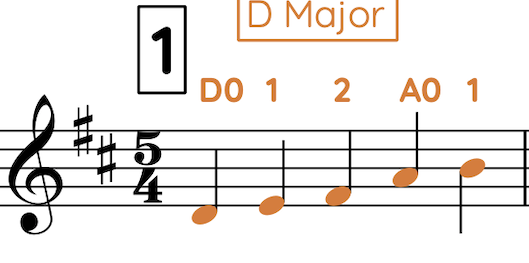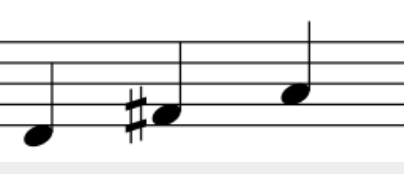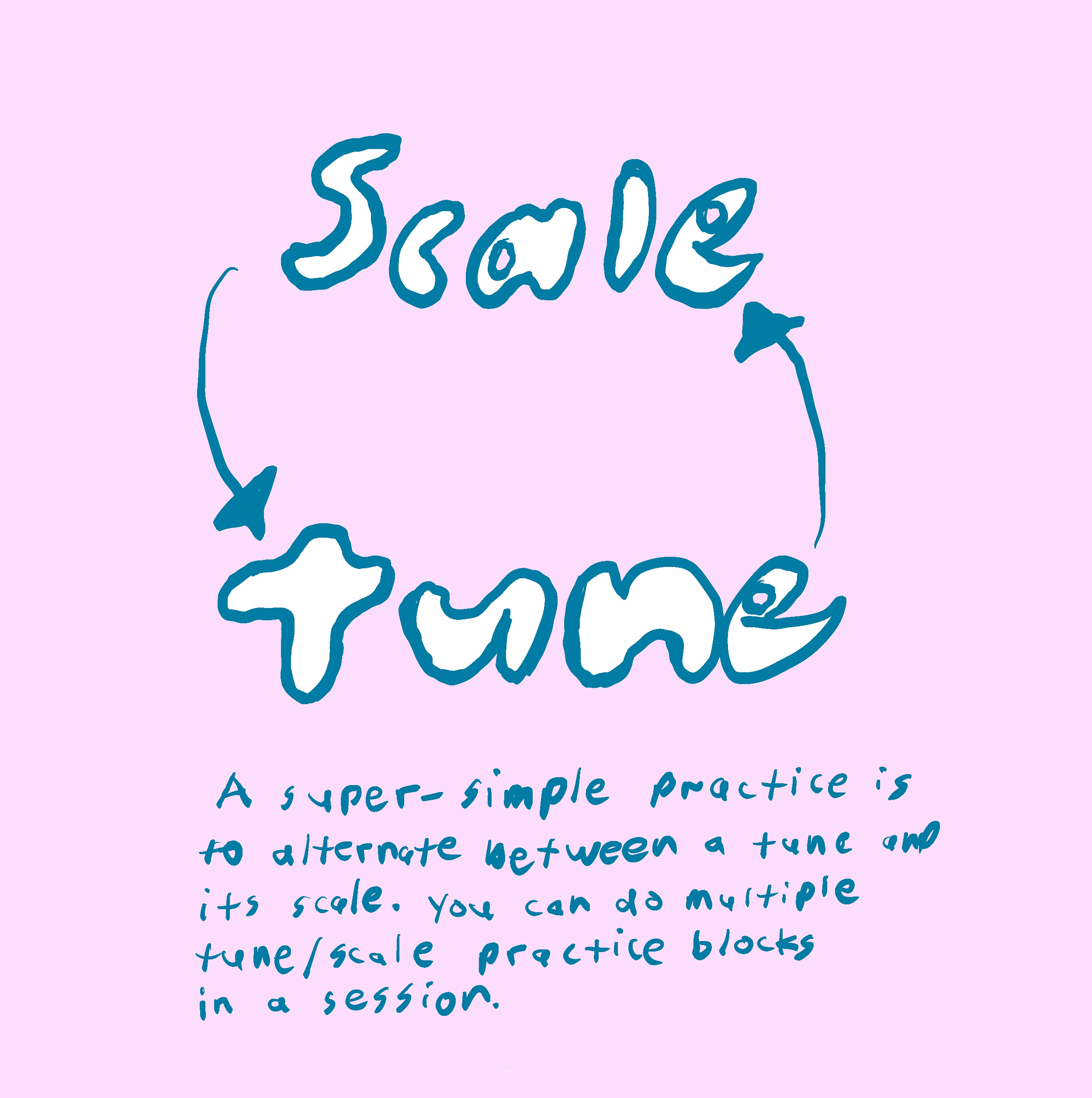Make your own scales
In this lesson I’ll show you how to make your own scales to practice specific parts of tunes. This will help you to focus on the notes you need to practice.
A simple and slightly unconventional way to think about scales is that each one is just a collection of notes that you need to practice. The most common scales we practice are seven like D major:

Pentatonic scales are five notes long:
D major pentatonic

Triads are three-note scales:
D major triad: D0-2-A0

Make your own scales
You can design your own scales to practice the particular thing you need to practice. Say you are trying to make the beginning of Irish Washerwoman sound better:
A1-D3-3-0-3-3-A1-D3-A1-3-L2-1

You could use this phrase to make up your own scale from a tune. Let’s take that phrase and remove all repetition:
A1-D3-D0-A1-AL2
Now let’s re-order the notes from lowest to highest:
D0-3-A1-L2-3
If we play it up and down, then we’ve made our very own scale. I call this process “Extract the scale”.
D0-3-A1-L2-3 | A3-L2-1-D3-0
This particular scale is great because it allows you to practice particular challenges in a focused way. This prepares you for the tune. Try playing it with the G drone below.
Go further by adding variations:
- Volume
- Texture: plucking, tremolo, staccato
- Rhythmic: hoedown, tuck, triplets
- Slur patterns
When you are able to play your custom scale with flow, then to return to practicing the original phrase. Finally, alternate between a tune and its scale in a Musical Conversation.
Custom scale <> Original phrase

Here’s another example of making a mini-scale from Arkansas Traveller (bar 11 of the B part):
A3-2-3-E1-0-A3-E0-L2

First we remove all repetition:
A3-A2-E1-0-L2
Next, reorder the notes into a custom scale:
A2-3-E0-1-L2
Practice the mini-scale with the A drone provided. As usual, try to make scale practice fun by adding melodic, rhythmic, textural and bowing variations. And remember to have a musical conversation:
Custom scale <> Original phrase
Take-home message 🪜
Here’s how to make your own scales:
- Find a part of a tune that challenges you.
- List out all the notes in that section (TABS).
- Remove repeated notes.
- Order from low to high, then high to low.
Making up your own scales will get you to be more interested in how scales work, and see the connection between scales and tunes. It’s both fun and empowering to take apart a phrase, see the fundamental parts, clean them off, and then put it all together again.
OK! Now go fiddle with it…
